 Nanofertilizers: The Future of the Agrichemical Industry?
05. 29. 2018
#Fertilizer feedstock
Nanofertilizers: The Future of the Agrichemical Industry?
05. 29. 2018
#Fertilizer feedstock

The agrichemical industry likes to feel good about itself. Don’t we all! So, it has created a self-image where its goal is not profit but the need to feed the world.
To improve this self-image (and to protect egos) agribusiness clings on to the notion that it wants to sell more fertilizer, feed additives, and crop protection chemicals not for making money, but to prevent the world’s poor from starving.
The result is that all too often it overlooks its biggest problem: wasted fertilizer.
As a recent FAO report from the UN states, “Poor use efficiency of current fertilizers is a major issue. For instance, in China, the world’s largest consumer of nitrogen fertilizer, up to 50% of the nitrogen applied is lost by volatilization and another 5–10% by leaching.”
This is a fact supported by a comparative study from Tamil Nadu Agricultural University in India, which found that, “Nutrient use efficiencies of conventional fertilizers hardly exceed 30-35 %, 18-20 % and 35-40 % for N, P and K respectively.”
Such an ineffective method of feeding plants has naturally attracted some scientific interest. While the research funds may be less than other, more glamorous, projects such as computing technology and space exploration (despite the obvious returns of cheaper food and feeding all of mankind), progress is slowly being made.
One of the most promising research topics for improving plant nutrition is in the field of nanofertilizers. As a study published in May 2018 in the peer-reviewed Journal of Agriculture and Food Chemistry states, “Mineral fertilizers are key to food production, despite plant low nutrient uptake efficiencies and high losses. However, nanotechnology can both enhance crop productivity and reduce nutrient losses. This has raised interest in nano-scale and nano-enabled bulk fertilizers, hence the concept of nanofertilizers.”
What are Nanofertilizers?
Nanofertilizers are made by manipulating nutrients and minerals on a molecular level, typically amounts of mineral that are smaller than 100 nanometres (1mm = 1,000,000nm). By doing this agrichemists hope to improve the delivery of poorly bioavailable elements such as phosphorous, potassium, or zinc.
Amazingly, despite the multi-trillion-dollar agricultural industry placing so much faith in nanofertilizers to reduce waste, there has been no wide-ranging, comprehensive comparison of the effectiveness of nanofertilizers against conventional fertilizers, … until now.
This is because an international research team from Austria, Australia, and Switzerland have conducted a study to compare nanofertilizer trials against traditional fertilizers. Publishing their results in the journal Nature Nanotechnology, the team report that they have, “… identified 29 studies from 16 papers allowing comparisons of efficacy for nanofertilizers and non-nanofertilizers. For every plant–nanofertilizers experiment, one parameter representative for germination, plant growth or crop yield was selected and compared with the one obtained with the corresponding conventional fertilizer, at any nominal concentration.”
You can read more about fertilizer feedstocks and agrichemical raw material news in other articles in the AG CHEMI GROUP blog page. For example, Innovative Approach Taken to Phosphorus Nanofertilizer Research, or The Impact of American/Chinese Trade Relations on Agribusiness.
How Effective are Nanofertilizers?
The study found that for each of these categories, “The median efficacy gain of nanofertilizers over conventional fertilizers was 19, 18 and 29% for categories 1, 2 and 3 respectively.” While surprisingly, “For category 2 nanofertilizers, about 20% exhibited lower efficacy than their corresponding conventional analogues.”
This means that efficiency improvement was generally less than a quarter, while almost one fifth of the studies on nanofertilizers for plant growth found them to be less effective than traditional methods.
Worse still, was the poor quality of data that the research team found. As the Royal Chemical Society’s science correspondent Katrina Kramer reports, “Few studies fully characterise the size and shape of their nanomaterials.” Adding that, “Experiments also frequently fail to compare the nanoparticle formulations to both commercial versions of the same compound and the active ingredient on its own.”
Without full comparisons between nanofertilizers and their traditional counterparts, few conclusions can be drawn.
However, and perhaps most critically, is the lack of field trials for any of the nanofertilizers analysed. As the Nature Nanotechnology report states, “Currently, there is no comprehensive study in the literature that evaluates efficacy and environmental impact of nano-agrochemicals under field conditions. This is a crucial knowledge gap and more work will thus be necessary for a sound evaluation of the benefits and new risks that nano-agrochemicals represent relative to existing products.”
Nanofertilizers: The Future of the Agrichemical Industry?
Maybe nanofertilizers will revolutionise the agrichemical industry. Given the huge amount of wasted fertilizer products, the impact on the environment, and rocketing food prices, then even small improvements in fertilizer technology will be beneficial.
However, is there a danger that in our rush to find a nanofertilizer 'Holy Grail' that will solve all our problems, we will miss out on the more realistic goal of improving conventional fertilizer use?
If this latest research is accurate, then there is little evidence to suggest that nanofertilizers really holds all our agribusiness solutions in one nano-sized answer. Instead, our hunt for the Holy Grail may end up with us merely chasing a pot of gold at the end of a rainbow.
Client Zone – Be in Touch with All the Important Information
Take the opportunity to register in our client zone to find complete product specifications and latest updates on our offers.
Photo credit: Mehrnews, Hindawi, Nature Nanotechnology, TheConversation, Manuretosavetheworld, MaximumYield, TheConversation & Homewatersystems
